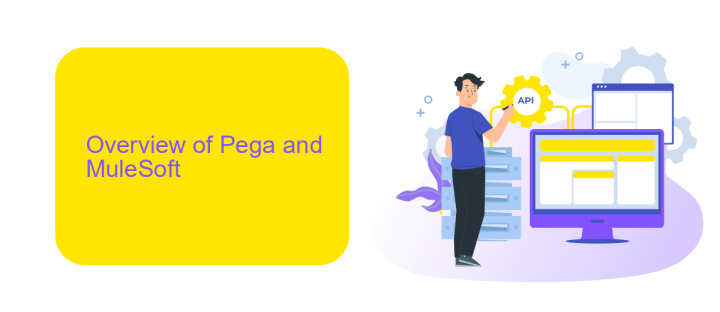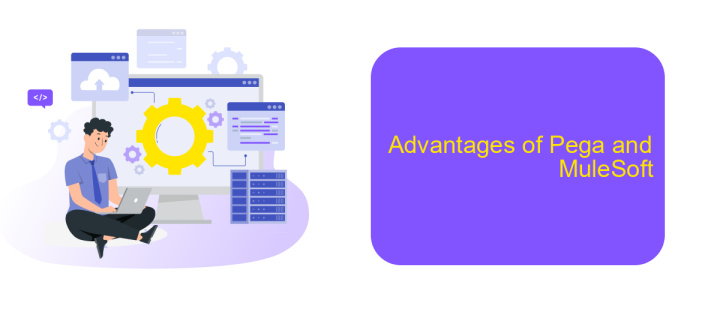Pega Vs MuleSoft
In the rapidly evolving landscape of enterprise technology, choosing the right platform for integration and automation is crucial. Pega and MuleSoft are two leading contenders, each offering unique strengths and capabilities. This article delves into a detailed comparison of Pega Vs MuleSoft, examining their features, use cases, and overall effectiveness to help businesses make an informed decision.
Pega vs MuleSoft: Choosing the Right Integration Platform
Choosing between Pega and MuleSoft for your integration needs can be challenging, as both platforms offer robust capabilities. Pega excels in automating business processes and case management, providing a comprehensive suite for end-to-end solutions. On the other hand, MuleSoft specializes in API-led connectivity, enabling seamless integration across various systems.
- Pega: Ideal for business process automation, case management, and low-code development.
- MuleSoft: Best suited for API management, data integration, and connecting disparate systems.
- ApiX-Drive: A versatile tool for setting up integrations quickly without extensive technical knowledge.
Ultimately, the right choice depends on your specific needs. If your focus is on streamlining business processes and case management, Pega might be the better option. However, if you need robust API management and data integration capabilities, MuleSoft could be more suitable. For those looking for an easy-to-use integration setup, ApiX-Drive provides a user-friendly solution that complements both platforms.
Overview of Pega and MuleSoft

Pega and MuleSoft are two powerful platforms designed to streamline business processes and enhance digital transformation. Pega specializes in business process management (BPM) and customer relationship management (CRM), offering tools that enable organizations to automate workflows, manage customer interactions, and improve operational efficiency. Its low-code application development environment allows for rapid deployment and customization, making it a preferred choice for businesses looking to quickly adapt to market changes.
On the other hand, MuleSoft focuses on integration and API management, providing a robust platform for connecting applications, data, and devices. MuleSoft's Anypoint Platform enables seamless integration across various systems, facilitating data exchange and improving connectivity. For businesses seeking to integrate multiple services and automate workflows, tools like ApiX-Drive can complement MuleSoft by simplifying the integration process, allowing for efficient data synchronization and real-time updates. Together, Pega and MuleSoft offer comprehensive solutions for managing complex business processes and ensuring seamless system integration.
Key Features and Capabilities

Pega and MuleSoft are two prominent platforms in the integration and automation landscape, each offering unique features and capabilities. Pega is renowned for its robust process automation and case management capabilities, while MuleSoft excels in API management and connectivity.
- Pega: Advanced process automation, dynamic case management, AI-driven decisioning, and low-code development environment.
- MuleSoft: Comprehensive API management, pre-built connectors, data integration, and real-time analytics.
Both platforms offer powerful tools for integrating diverse systems and automating workflows. Additionally, services like ApiX-Drive can enhance these integrations by providing a user-friendly interface for connecting various applications without extensive coding. Whether you need seamless API management with MuleSoft or sophisticated automation with Pega, these platforms cater to a wide range of business needs, ensuring efficient and effective operations.
Advantages of Pega and MuleSoft

Pega and MuleSoft are two powerful platforms in the realm of business process management and integration. Each offers unique advantages that cater to different organizational needs. Pega is renowned for its ability to streamline complex business processes through its robust BPM capabilities, while MuleSoft excels in facilitating seamless integrations across various systems and applications.
Pega's strength lies in its low-code development environment, which enables rapid application development and deployment. This allows businesses to adapt quickly to changing market conditions and customer demands. Moreover, Pega's AI-driven decisioning and case management features enhance operational efficiency and customer engagement.
- Low-code development for rapid deployment
- AI-driven decisioning and case management
- Robust BPM capabilities
- Seamless integration with existing systems
MuleSoft, on the other hand, provides a comprehensive integration platform that connects data, applications, and devices with ease. Its Anypoint Platform offers a unified solution for API management, design, and deployment. Additionally, services like ApiX-Drive can be leveraged to further simplify the integration process, making it easier for businesses to connect their various tools and systems.
Comparison of Pricing and Licensing
Pega and MuleSoft differ significantly in their pricing and licensing structures. Pega typically offers a subscription-based model, which includes various tiers depending on the scale and complexity of the deployment. This model allows businesses to scale their usage and only pay for what they need, making it a flexible option for growing enterprises. Additionally, Pega provides comprehensive support and maintenance services as part of their subscription, ensuring that clients receive continuous updates and assistance.
On the other hand, MuleSoft employs a more modular pricing strategy, where costs are determined based on the number of integrations and the volume of data processed. This allows for a more tailored approach, particularly for organizations with specific integration needs. MuleSoft's licensing also includes access to its extensive library of pre-built connectors and templates, which can significantly reduce development time and costs. For businesses looking to streamline their integration processes, services like ApiX-Drive can complement MuleSoft by offering easy-to-use tools for automating and managing various integrations efficiently.
FAQ
What are the main differences between Pega and MuleSoft?
Which platform is better for API management?
Can Pega and MuleSoft be used together?
What are the deployment options for Pega and MuleSoft?
How can I integrate Pega and MuleSoft with other tools?
Apix-Drive is a simple and efficient system connector that will help you automate routine tasks and optimize business processes. You can save time and money, direct these resources to more important purposes. Test ApiX-Drive and make sure that this tool will relieve your employees and after 5 minutes of settings your business will start working faster.

